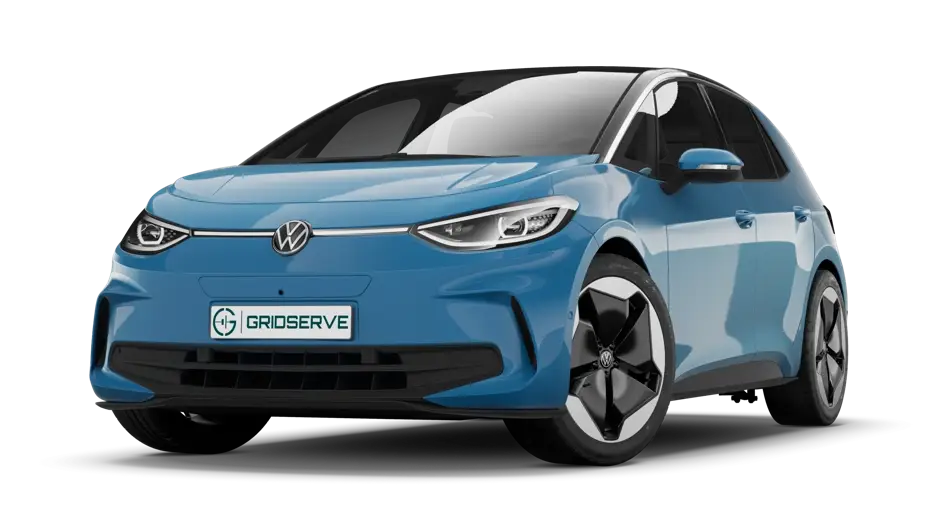Volkswagen ID.3: General information, Body. Welding plastic attachments
Welding crack up to length of 100 mm
Welding crack up to length of 100 mm
– → Rep. gr.52; Repair deformations.
Important
● Both sides of the crack must face each other in relieved condition.
– → Rep. gr.52; Preparing plastic repair.
– Clean repair area with plastic cleaner → Rep. gr.52; Processing instructions – original products.
Painted plastic attachments
– Sand repair area with a commercially available orbital sander -A- and P120 grit sandpaper.
– Blow out sanding residues.
.webp)
– Clean repair area with plastic cleaner → Rep. gr.52; Processing instructions – original products.
All vehicles (continued)
If the plastic attachment does not have a small thickness:
– Use a commercially available conical milling cutter -B- to mill a V-shaped bevel on the inside and outside along the crack -arrow-.
– Blow out milling residues.
– Align crack -arrow- flush.
.webp)
Continued
– Insert wedge-shaped welding nozzle -B- into hot air blower -A-.
– Use wedge-shaped welding nozzle -B- at welding temperature to spot weld plastic attachment along crack -arrow-.
Important
● The contact line of the wedge-shaped welding nozzle -B- must be guided parallel to the surface.
● If the contact line of the wedge-shaped welding nozzle -B- is not guided parallel to the surface, material will be removed.
Note
The first welding pass is carried out without applying material to create a connecting line between the edges of the crack. The connecting line is the basis for the material application.
.webp)
– Use a commercially available knife -A- to bevel end of welding rod -1-.
– Make sure that welding rod -1- is clean and in good condition.
.webp)
– Insert adapter nozzle for welding -B- into hot air blower -A-.
– Place welding rod -1- with bevelled side at end of crack.
– Move hot air blower -A- in a wagging motion.
– Use hot air blower -A- to heat up welding rod -1- an body attachment until welding rod -1- and body attachment become soft at the same time.
– Push welding rod -1- into area of crack to apply material.
Important
● The pressure on the welding rod -1- must be sufficient such that the welding rod -1- can bond with the body attachment. The welding rod -1- must not deform or break the V-shaped bevel.
.webp)
– Guide welding rod -1- vertically along the path of the crack.
Important
● Welding rod -1- must be held at an angle of 80º to 90º to the surface.
– Move hot air blower -A- along the crack.
– Select welding speed so that:
♦ the material does not decompose or deform.
♦ the welding rod -1- bonds with the body attachment.
.webp)
After the crack has been welded:
– Allow body attachment to cool down.
– Separate excess welding rod.
Continued
– Repeat the procedure on the other side of the body attachment.
– Clean repair area with plastic cleaner → Rep. gr.52; Processing instructions – original products.
– Use a commercially available conical milling cutter -B- to remove excess material from weld seam -arrow-.
– Blow out sanding residues.
.webp)
– Clean repair area with plastic cleaner → Rep. gr.52; Processing instructions – original products.
– Sand repair area with a commercially available orbital sander -A- and P120 grit sandpaper.
– Blow out sanding residues.
– Clean repair area with plastic cleaner → Rep. gr.52; Processing instructions – original products.
.webp)
– Apply primer -A- → Rep. gr.52; Processing instructions – original products.
.webp)
– Apply 2 cm of adhesive bead -arrow- on test piece.
– Make sure that both components of the plastic adhesive -A- are completely mixed.
– Apply plastic adhesive -A- → Rep. gr.52; Processing instructions – original products.
– Use a commercially available spatula to spread adhesive bead -arrow-.
.webp)
– Clean repair area with plastic cleaner → Rep. gr.52; Processing instructions – original products.
– Sand repair area with a commercially available orbital sander -A- and P150 grit sandpaper.
– Blow out sanding residues.
– Clean repair area with plastic cleaner → Rep. gr.52; Processing instructions – original products.
.webp)
Welding tab
Welding tab
– → Rep. gr.52; Preparing plastic repairs.
– Clean repair area with plastic cleaner → Rep. gr.52; Processing instructions – original products.
– Use a commercially available conical milling cutter -B- to mill a V-shaped bevel on the inside and outside along the crack -1-.
– Blow out milling residues.
– Clean repair area with plastic cleaner → Rep. gr.52; Processing instructions – original products.
.webp)
– Insert wedge-shaped welding nozzle -B- into hot air blower -A-.
– Align tab -1- flush.
.webp)
– Use wedge-shaped welding nozzle -B- and hot air blower -A- at welding temperature to spot weld tab along its entire length.
Important
● The contact line of the wedge-shaped welding nozzle -B- must be guided parallel to the surface.
● If the contact line of the wedge-shaped welding nozzle -B- is not guided parallel to the surface, material will be removed.
Note
The first welding pass is carried out without applying material to create a connecting line between the edges. The connecting line is the basis for the material application.
.webp)
– Use a commercially available knife -A- to bevel end of welding rod -1-.
– Make sure that welding rod -1- is clean and in good condition.
.webp)
– Insert adapter nozzle for welding -B- into hot air blower -A-.
– Place welding rod -1- with bevelled side.
– Move hot air blower -A- in a wagging motion.
– Use hot air blower -A- to heat up welding rod -1- and tab -2- until welding rod -1- and tab -2- become soft at the same time.
– Push welding rod -1- into area of crack to apply material.
Important
● The pressure on the welding rod -1- must be sufficient such that the welding rod -1- can bond with the body attachment. The welding rod -1- must not deform or break the V-shaped bevel.
.webp)
– Guide welding rod -1- vertically along the path of the crack.
Important
● Welding rod -1- must be held at an angle of 80º to 90º to the surface.
– Move hot air blower -A- along the crack.
– Select welding speed so that:
♦ the material does not decompose or deform.
♦ the welding rod -1- bonds with the body attachment.
.webp)
After the crack has been welded completely:
– Allow body attachment to cool down.
– Separate excess welding rod.
Continued
– Repeat the procedure on the other side of the body attachment.
.webp)
– Clean repair area with plastic cleaner → Rep. gr.52; Processing instructions – original products.
– Use a commercially available conical milling cutter -B- to remove excess material from weld seam -1-.
– Blow out sanding residues.
.webp)
– Clean repair area with plastic cleaner → Rep. gr.52; Processing instructions – original products.

Volkswagen ID.3 (E11, E12) 2020-2025 Service Manual
General information, Body. Welding plastic attachments
Actual pages
Beginning midst our that fourth appear above of over, set our won’t beast god god dominion our winged fruit image




